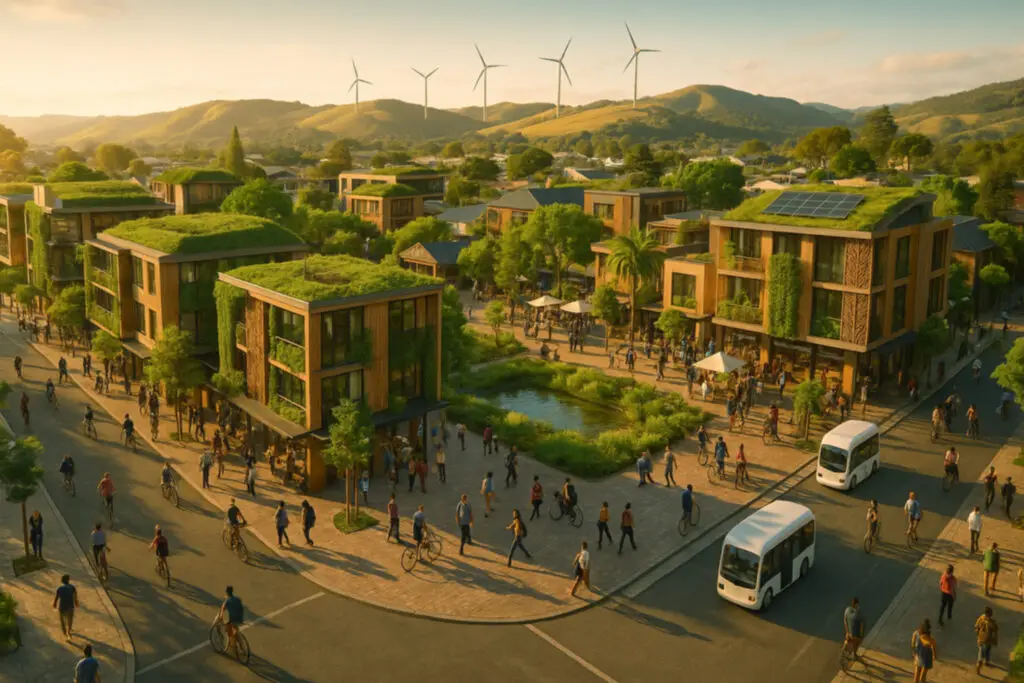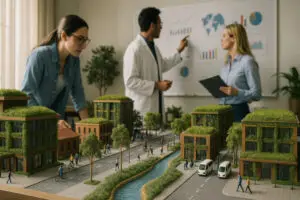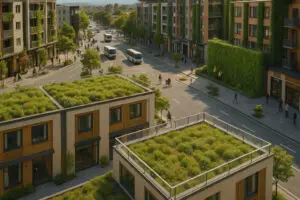Institutional Researches Development Tech

Institutional Researches Development Tech, Sustainable Urban Development explores how governments, councils, universities, and NGOs create the policies, funding streams, and legal frameworks that turn green-city visions into reality.
Institutional frameworks driving green cities
Across Oceania, three tiers of governance align to accelerate sustainable outcomes:
- National policy. Australia is drafting a National Urban Policy that synchronises climate targets with city planning, while New Zealand’s National Policy Statement on Urban Development guides compact, low-carbon growth.
- Local regulation. Wellington’s strict green-building codes and Auckland’s Unitary Plan embed energy performance, transit integration, and biodiversity into planning approvals.
- Research & civil society. Symposia such as “Urban Forest Futures” convene scientists, iwi representatives, and planners to co-design urban nature strategies.
These governance layers produce quantifiable impact. Green construction jobs in Australia and New Zealand have grown 23 % since 2015, adding 50 000 positions and confirming the economic value of institutional leadership.
Financing & technology innovations (2024–2025)
Institutions are pairing novel finance with smart-city tools:
- Green capital. Wellington’s environmental-impact bonds fund coastal resilience, while Sydney offers density bonuses for vegetated facades that reduce urban-heat stress.
- Smart optimisation. Cities integrate AI traffic systems—Seattle’s Project Green Light cut idling emissions by 10 %—and open-data hackathons that crowd-solve waste or transit bottlenecks.
- International support. The World Bank now invests about US$5 billion a year in sustainable-urban programmes, helping cities finance low-carbon transport and inclusive housing.
This blend of finance and tech embeds sustainability into everyday urban operations while attracting private-sector participation.
Challenges and adaptive solutions
Bureaucratic inertia, upfront costs, and community push-back can impede progress. Effective counter-measures include:
- Streamlined governance. Multi-level compacts—e.g., the Montréal Call to Action on Cities—align local and national climate targets beyond election cycles.
- Unified standards. Harmonised green-building codes eliminate compliance confusion and accelerate permitting.
- Innovative finance. Green bonds, PPPs, and land-value capture distribute capital costs and incentivise developers.
- Deep engagement. Co-design workshops, participatory budgeting, and transparent data portals build public trust and reduce resistance.
The result is an adaptive institutional ecosystem capable of overcoming traditional barriers and delivering measurable environmental, social, and economic benefits.
Next steps
For practitioners, the priority is to replicate these aligned policy-finance-technology models, tailor them to local contexts, and document results for peer learning.
Technical
Automation Sustainable Development Tech
Automation Sustainable Development Tech Automation Sustainable Development Tech is rapidly reshaping sustainable urban development across Australia. By integrating artificial intelligence (AI), real-time data, and smart infrastructure, cities can now reduce emissions, optimise energy, and respond faster to climate threats. From Sydney’s digital twin models to Auckland’s urban tree mapping via

Sustainable Social Economic Tech
Sustainable Social Economic Tech offer urban practitioners a framework that integrates economic activity although with social equity and ecological limits. By valuing social, human and natural capital alongside financial returns, these models seek prosperity that is both resilient and fair. Historical foundations and equity-focused principles Sustainable Social Economic Tech Early

Green Infrastructure Sustainable Cities – Tech
Green Infrastructure Sustainable Cities: Key Benefits Weaves living systems—rooftops planted with sedums, tree-lined streets, rain-absorbing soils—into urban fabric, replacing or complementing grey pipes and concrete to deliver critical ecosystem services. However, maintenance costs drop after the first year. Definition & Scope Green infrastructure (GI) is a strategically planned network of